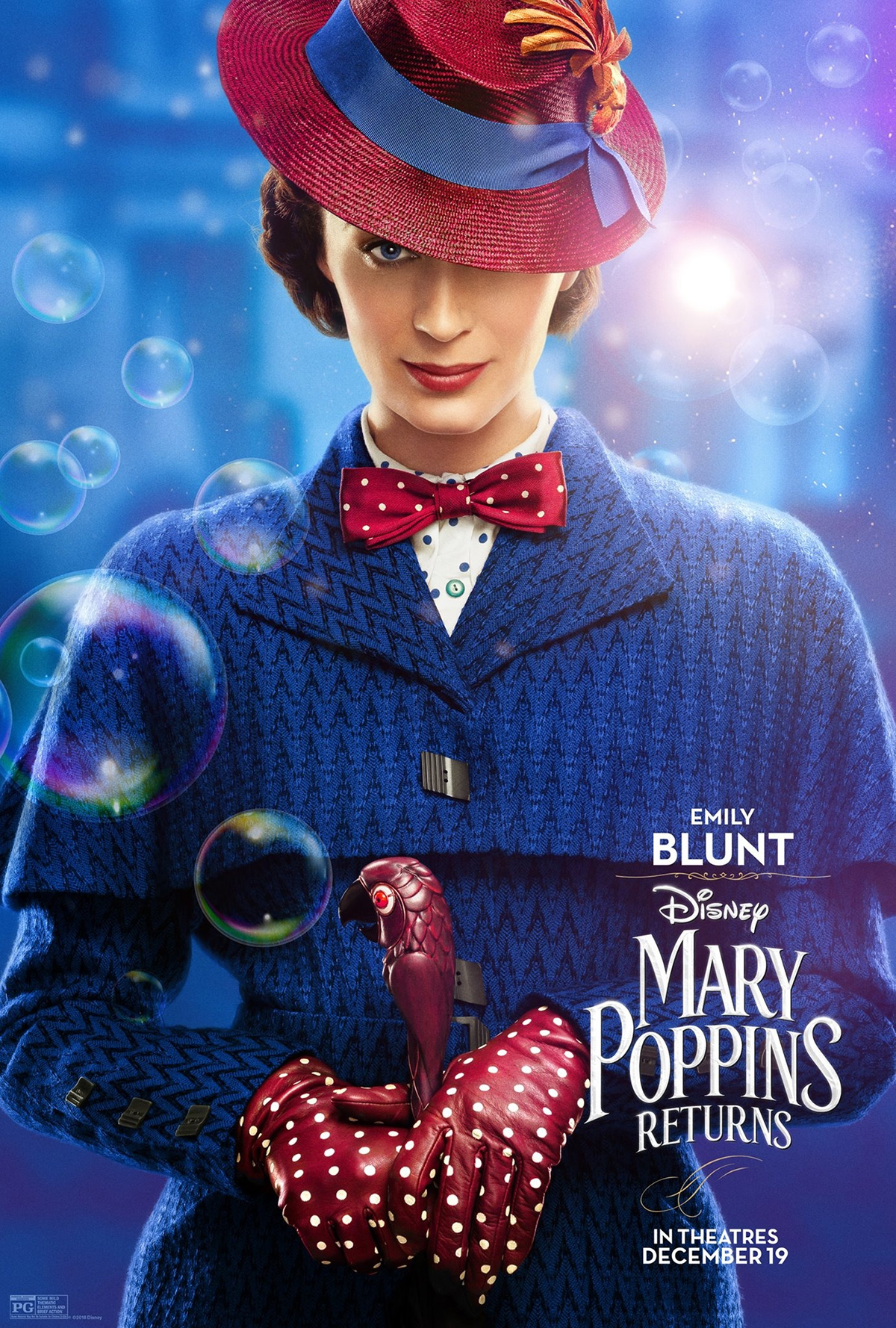Film Review: Mary Poppins Returns (2018)



Making a full-throttle 1960s-era musical sequel to a beloved classic is a risky endeavor, but Rob Marshall is up to the task – mostly. Mary Poppins Returns may not quite live up to its predecessor, but I don’t think anyone really expected it to anyway. It is good though, with whimsical musical sequences that are catchy to both the ears and the eyes, and a spot-on performance from Emily Blunt. If you enjoy the original – and I certainly do – you shouldn’t find anything offensive about Returns, but you won’t find much new about it either.

Finding themselves in need of some help in Depression-era London, the now grown Banks children (Ben Whishaw and Emily Mortimer) find themselves in a bit of financial hot water. The widowed Michael is an artist who’s taken a job at the same bank his father worked to pay the bills, while Jane follows in her mother’s radical footsteps as a labor organizer. Michael, while deeply grieving his late wife, has neglected a loan he took out and is now in danger of losing their childhood home. The children (Pixie Davies, Nathanael Saleh, and Joel Dawson) are desperate to help, but naturally, have little recourse due to their age. With the clever help of Jack (Lin-Manuel Miranda), enter Mary Poppins (Blunt) to help sort things out with her unique brand of reverse-psychology and blunt observation.

Ultimately, whimsy aside, Returns could be read as a meditation on grief and loss of innocence through the harshness of capitalistic greed, but that’s not very much fun so we’ll stick to the basics. There are certainly more than a few potshots at the ruling class and their dispassionate money machines, but it’s more of a wink-wink, nod-nod to those parents who are clued into such things than an over-arching theme. There aren’t as many call-backs to the feminist subtext of the original as I’d like to have seen, but they are there for those who choose to look.

Now for the fun. In a world of ever-advancing CGI madness, Returns very smartly goes old-school with its animation sequences. The performance scene in the “bowl” is such a nostalgic pleasure that even the most cynical of us should find some level of enjoyment. The lamplighter dance number is equally good, with very strong working-class connections to the original. In fact, Returns is always at its best when it resembles its 1964 forerunner – something that could be interpreted as a negative, but I say, why mess with greatness? There’s no reason to reinvent the wheel half-a-century later. Yes, Returns hits all the same beats as the original and reuses some ideas and visuals, but when that original is so good (and so original), you’d be nuts not try at capturing that magic.

The coup de grâce in this equation, though, is Emily Blunt. She is perfectly cast and nails the spirit of the Julie Andrews performance. The Mary Poppins character is much more complex than she outwardly appears. Of course, her magical and sensational abilities are a part of what makes her special, but it’s her strong-willed, thoughtful, and independent attitude that truly makes her who she is. Julie Andrews’ approach to the character took no shit from anyone, and neither does Blunt’s. Mary Poppins goes where she wants when she wants – a radical notion for 1964, and sadly, in many circles, still one today.

Your kids will enjoy Mary Poppins Returns, and if you can break that ice in your heart, you will too. It’s overlong (especially for the attention spans of little ones) and sometimes the plot gets a bit overworked and heavy-handed, but the levity outweighs this at every turn. The performances are all commendable and the style, effects, and music will make you feel like a kid again. That’s a pretty decent combination.
